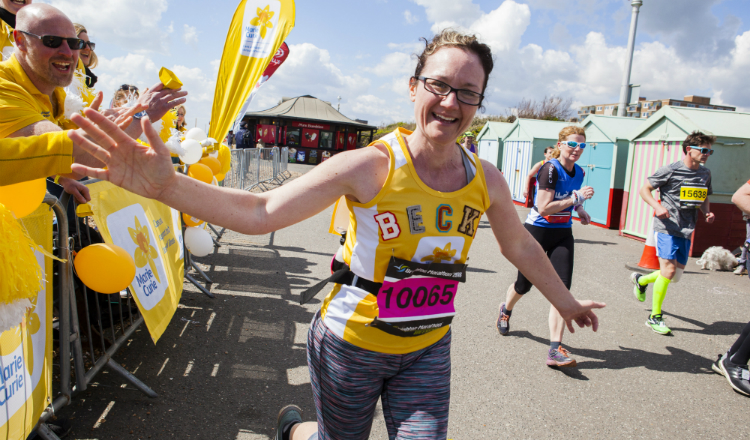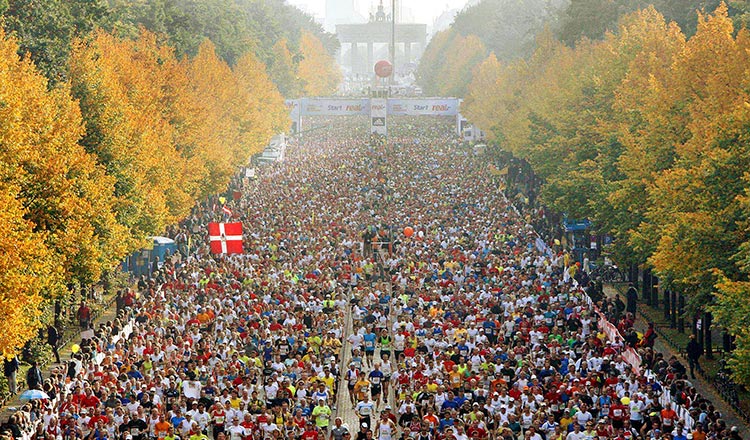Reduce your running injury risk
Do these simple exercise drills to spend more time on your feet and less time on the treatment table.

If you get a group of runners together there are a couple of subjects that they’ll swap stories about. One of those topics is likely to be their greatest runs and races and the other (less inspirational one) is injuries.
It can seem like getting injured is an inevitable part of training and the statistics aren’t encouraging. In one Danish study, 254 out of 930 new runners (runners who had run less than 10k in the past year) experienced an injury during their first year of training.
Run strong
If you want to reduce your chances of getting injured, you need to take preventive action by doing some injury-proofing exercises. Our expert recommends that you focus on the part of your body that takes the biggest pounding.
‘Foot exercises are the most undertrained and under-considered thing for runners,’ says biomechanics consultant Travis Allan, who has worked with Olympic triathletes and elite athletes including the boxer Anthony Ogogo and the rugby player James Haskell.
‘It seems obvious but very few people do specific lower leg exercises. They’re important because if your foot isn’t hitting the ground properly you can start to develop common issues such as runners knee or IT band (the connective tissue that runs along the outside of your thigh) issues. The exercises below will improve your capacity to absorb the shock of each stride and dissipate force.’
How to do it
Perform the exercises below in order either before a run or on non-running days. Some of the exercises involve subtle movements so to get the full benefit you need to follow the form guides and concentrate on the precise movements.
Exercise 1: Foot eversion
Lie on your back with your knees bent and both feet flat on the floor.
Secure an exercise band around your mid-foot (not your toes) on both feet so that there is a small amount of tension in the band when your feet are roughly shoulder width apart.
On one foot, tilt the heel and big toe inwards slightly then sweep your foot outwards across the floor to create a stretch in the band.
The movement will be subtle and you’ll know you’re doing it correctly if you feel a muscle contraction in the outside of your lower leg.
Hold that position for a count of 6 seconds. Come back to the start position for 6-10 seconds and repeat that six times then do the same on the other foot.
Exercise 2: Foot inversion
Lie on your back with your knees bent and both feet flat on the floor.
Secure an exercise band around your mid-foot (not your toes) on both feet and cross one foot over the other.
Let your heel roll outwards (but don’t tilt it so far that you’re on the side of your foot) then sweep your foot inwards until you feel a contraction on the inside of your lower leg.
Hold that position for a count of 6 seconds. Come back to the start position for 6-10 seconds and repeat that six times then do the same on the other foot.
Exercise 3: Plantar flexion
Lie on your back with your knees bent and both feet flat on the floor.
Take one foot back to place the top of that foot behind your other heel.
Gently push the forefoot of your front foot into the ground, rotate your foot inwards slightly and pull it back in towards your other foot to feel your calf muscle engage.
Hold that position for a count of 6 seconds, rest for 6-10 seconds and repeat that six times then do the same on the other foot.
Exercise 4: Dorsiflexion
Lie on your back with your knees bent and both feet flat on the floor.
Flex your toes on both feet to raise them off the floor and try to avoid pulling your whole foot off the floor.
Hold that position for a count of 6 seconds. Come back to the start position for 6-10 seconds and repeat that six times.
For more on Allan, visit travisallantt.com
